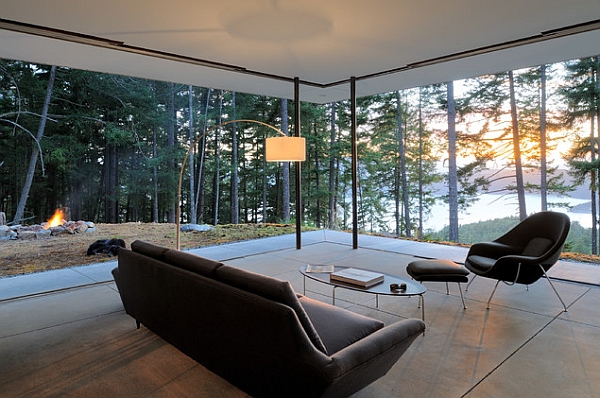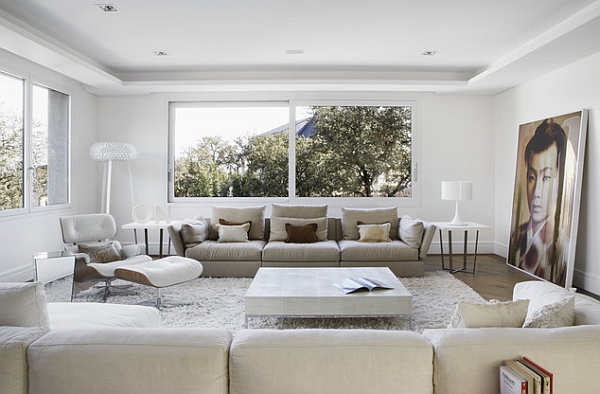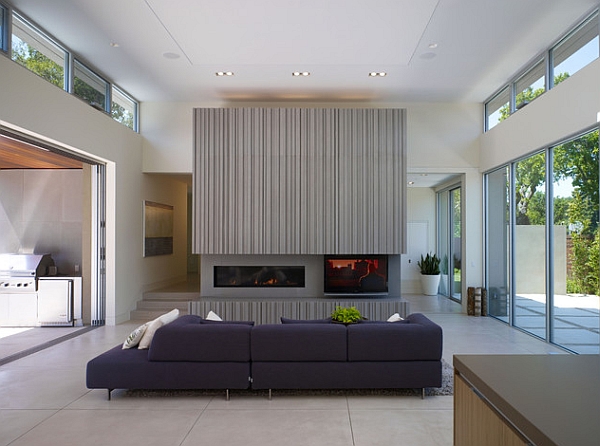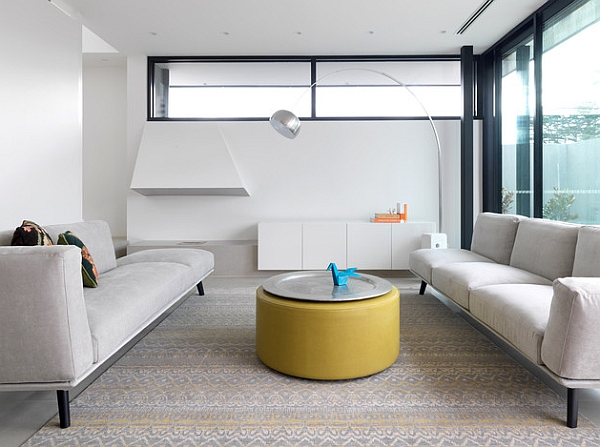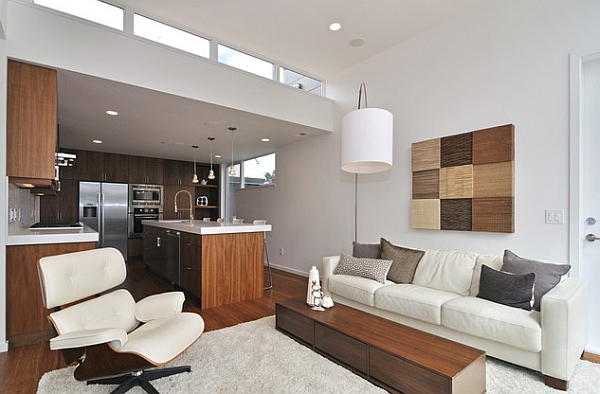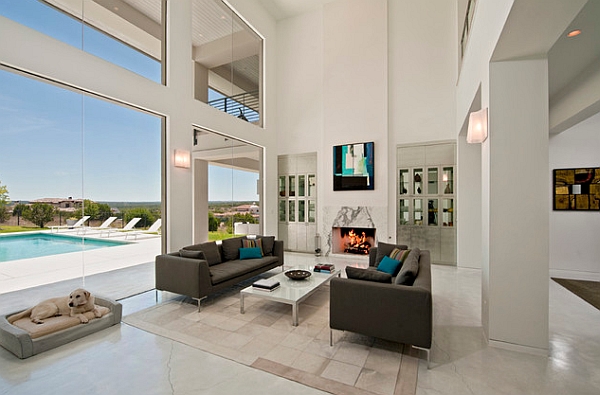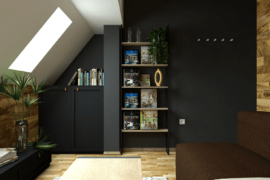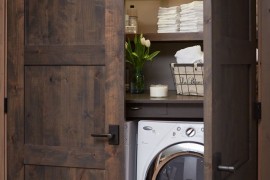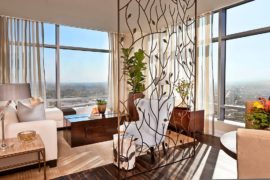Minimalism is essentially the art of being able to comfortably, conveniently and aesthetically live with less. While on the surface of it all, this task may look easy enough, in reality it is a lot easier said than done. In fact, a beautiful, functional home with a minimal theme is one of the hardest to design. It takes skill, restraint and a whole lot of discipline. For some of us who tend to bring home pretty much anything and everything, it is the single most difficult thing to do. Minimalist design is not about adding intricacies, it is about taking away layers!
by Capoferro Design Build Group
A minimal living room is obviously where the journey starts. Despite opting for a style that oozes sophistication, elegance and crisp straight lines, there is still plenty you can do to add character and unique personality to your minimal living space. Here are 50 such gorgeous and captivating inspirations that combine form with function and class with comfort in an effortless manner. Dig in and enjoy the ride –
by Gary Gladwish Architecture
by Tara Benet Design
by Bigtime Design
by Lignum Elite
by CONTENT Architecture
by Chris Snook
by Matarozzi Pelsinger Builders
Playing with the Undertones
Going for a minimal look does not mean you follow a cookie-cutter model of using black and white in an impersonal and almost sterile fashion. In fact, there is a very fine line between ravishing minimal interiors and boring monotony, and the hardest part about minimalism is the art of staying on the right side of that elusive line! This is precisely why we suggest you induce a little flavor into that contemporary minimal ambiance. There are several styles that go along with a minimal design scheme in an organic fashion.
by Resolution: 4 Architecture
by World Architecture News
by Mark Brand Architecture
The most popular styles include the chic industrial minimal, the captivating Soho Style that has its roots in Manhattan, and of course, the inspired Oriental theme that is inherently minimal.
by Clifton Leung Design Workshop
by Niki Papadopoulos
by Popp Littrell Architecture + Interiors
The trick is to ensure that you keep the living room largely minimal with these respective themes, only making their presence felt as subtle undertones. The lines still need to be clean and well-defined, and the intricate patterns must be avoided wherever possible. Minimalism in its truest form detests anything but the bare minimum! Live by this rule every time you are tempted to add a new decor piece to your minimalist-themed living room.
by House of Amelia
by BiglarKinyan Design Partnership
by Capital Building
Mid-Century Modern Magic!
How often have you come across a brilliant minimal living room that seems to feature the gorgeous Arco Floor Lamp or the iconic coffee table from Isamu Noguchi at its heart? It is an undeniable fact that Mid-Century modern decor looks stunning in a contemporary, minimal space. The connection between the two is so natural and seamless, you wonder why the ’70s and the ’80s saw a change in design trends without continuing the popular style statement that began in the ’50s. From the comfy Eames Lounger to the stylish Swan chair, Mid-Century modern finds a whole new home in the minimal living room.
by Davidov Partners Architects
by Stuart Silk Architects
by Chris Pardo Design
Remember that a minimal living room need not be all about the simple lines, squares and boxes. A sensuous curve here and there can add to the appeal of the room immensely. This is where Mid-Century modern furnishings come in incredibly handy. They offer both visual and geometric contrast while keeping the design clean and coherent. You never move away from the minimal path and yet add plenty of charisma to the living room.
by Daniel Sheehan Photography
by Randall Architects
by Elad Gonen
by Designer Premier
by Product Bureau
by Garret Cord Werner Architects & Interior Designers
Creating a Focal Point
One of the great advantages of opting for a minimal living room is the simplicity with which you can elevate the focal point of the room. With the right lighting or even a pop of accent color or trim, the area or decor piece is instantly turned into the showstopper that turns heads and becomes a conversation-starter. With minimal rooms often sticking to just one or two neutral tones, the background becomes a perfect canvas on which you can highlight any object of your liking. In fact, you can even change these accents seasonally to keep up with the hottest trends.
by Elad Gonen
by Murray Homes
Fireplaces and coffee tables also make wonderful focal points in a minimal room. The natural radiance of the fire makes it an instant hit, while an unusual and eclectic coffee table is hard to miss. Nature lovers can also turn their attention towards indoor plants, while art lovers obviously will find the pristine white, gallery-style setting a godsend!
by John Maniscalco Architecture
by Gaile Guevara
by Michelle Williams Photography
by JWT Associates
by Magdalena Keck Interior Design
Less IS More!
When expert interior designers tell you to take away whatever you can and keep only the decor you love, it is not just about economy of furnishings. In fact, a minimal look is all about the creation of space. Try and leave plenty of open space around each decor item to bring in a sense of uncluttered ambience and airiness. This obviously must be done while keeping the proportionality and visual appeal of the room. But minimal living rooms are as much about visual space as they are about real space. Acrylic and glass tables, suspended accessories and floating shelves help immensely in this regard.
by Ian Moore Architects
A minimal living room does not mean creating a space that is hard to live in and only offers a visual treat. At the end of the day, aesthetics devoid of comfort mean very little. This is exactly why we encourage you to find that right balance between minimalism and functionality. And the key to that obviously lies in staying disciplined with both your shopping and decorating choices…
by Cornerstone Architects
by Lucy Call
by Patrick Heagney Photography
by Cynthia Lynn Photography
by Roger Hirsch Architect

